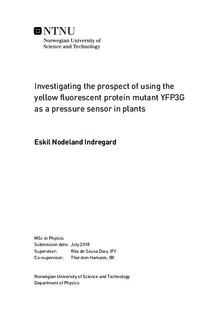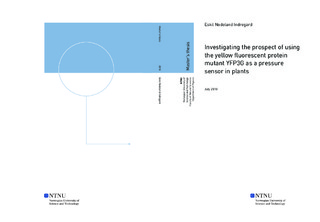| dc.description.abstract | Plants have no skeleton, but instead get their structural support from a hydrostatic pressure called turgor pressure pressing against a strong cell wall. This pressure can reach up to 2 MPa, and is also an important part in how plant cells grow. New research have also began to shed light on the possible role of turgor pressure in sensing cell wall damage and in the mechanisms maintaining the integrity of the cell wall. Current methods of measuring this pressure are not capable of measuring turgor pressure in vivo, without expensive time consuming techniques, and a better method is therefore needed. A pressure sensitive yellow fluorescent protein have recently been developed, and this project have therefore tried to test the feasibility of employing this protein as a turgor pressure sensor, as well as doing molecular dynamics simulations to try to better understand the conformational changes happening in the molecule with varying pressure. The results are inconclusive, with no significant difference in change measured between transgenic plants expressing the mutant yellow fluorescent protein versus plants expressing the wild type. The molecular dynamics simulations also did not produce any significant results | |

